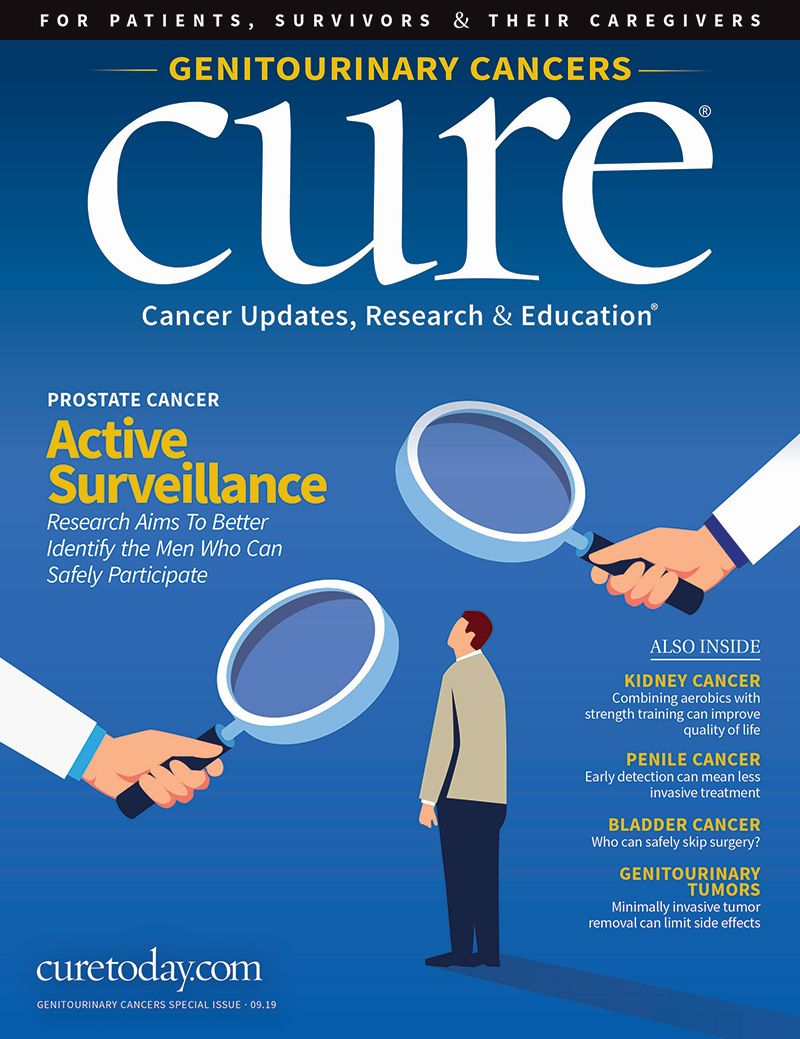Growing Knowledge Will Help Refine Decisions About Who Should Participate in Active Surveillance of Prostate Cancer
In the medical community, we know that, at a population level, active surveillance is better for certain men with prostate cancer, so we believe the benefit weighs in their favor. We would like to offer men more certainty that surveillance can work for them and hope that, in the next few years, research will bring that to pass.
After receiving a cancer diagnosis, most patients feel compelled to take definitive action to get rid of the disease.
It seems the obvious choice, but when the diagnosis is low-risk prostate cancer, there’s another option: active surveillance. The concept took a long time to set in for both
patients and physicians. Although some details remain unresolved, this minimally invasive approach, which delays surgery or radiation while periodically testing for progression, is considered the gold standard for men with low-risk disease.
But why is that, and how can a man decide if it’s the right strategy for him? Our article in this issue of CURE® explores the supporting data behind active surveillance and unresolved questions about the program, as well as what the scientific community is doing to answer them.
A major benefit of active surveillance: It lets men avoid invasive treatment and the accompanying side effects, including incontinence and impotence. Carefully monitored, men on this program have outcomes as favorable as those of their counterparts who choose more invasive treatments.
In most cases in which the cancer progresses, surgery or radiation can be prescribed to control the disease. Doctors generally do well in determining the right moment for this, and their accuracy will only grow with continued understanding of the biology of the disease. In the meantime, patients can help delay the need for intensive treatment through lifestyle choices. One study showed that men who follow a Mediterranean diet — low in red meat and sugar; high in fruits, vegetables, legumes, fatty fish and grains — reduce their risk of aggressive prostate cancer. Another study showed that regular, vigorous physical activity also reduced risk.
For some, the biggest concern about active surveillance is that a very small portion of men assigned to this method may have unexpectedly aggressive prostate cancer that metastasizes before its progression is picked up by a test. In these cases, patients find out too late that potentially curative surgery or radiation would have been better options, although it still is not known if early treatment would have made a difference. Ideally, scientists will soon uncover a way to even more accurately identify the men who will never need invasive treatment. A clearer understanding of the genomics that drive prostate cancer will help sort this out.
Another barrier to active surveillance is concern that it will breed worry about unchecked disease progression. As a result, some who are eligible for active surveillance choose surgery or radiation instead.
In the medical community, we know that, at a population level, active surveillance is better for certain men with prostate cancer, so we believe the benefit weighs in their favor. We would like to offer men more certainty that surveillance can work for them and hope that, in the next few years, research will bring that to pass.

Dickey Betts Died, ‘Shopaholic’ Author Announces Cancer Diagnosis and More
April 19th 2024From the Allman Brothers Band’s singer Dickey Betts dying after a cancer diagnosis to the “Shopaholic” author announcing her glioblastoma diagnosis, here’s what is happening in the cancer space this week.
Read More